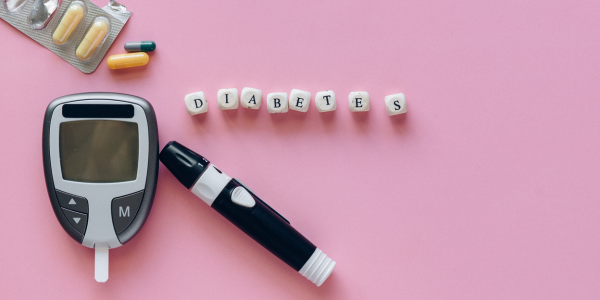Diabetes is a condition that affects millions of people worldwide, but there is hope for reversing its effects. Recent data suggests that by targeting the fat in your liver, you can effectively reverse diabetes. While some refer to it as putting diabetes in remission, the underlying principle remains the same. In this blog post, we will explore the fascinating connection between fatty liver disease and diabetes, and discuss effective strategies to reverse insulin resistance and regain control of your health.
The Liver-Muscle Connection:
Insulin resistance, the precursor to diabetes, has been found to originate in the muscles and then spread to the liver, according to a wealth of data. However, conflicting studies propose that insulin resistance starts in the muscles before transferring to the liver. Regardless, the key takeaway is that fixing insulin resistance can lead to diabetes reversal. It’s important to note that insulin resistance cannot be effectively addressed if you have a fatty liver. Therefore, the removal of liver fat becomes crucial for long-term success.
Understanding Fatty Liver Disease and Diabetes:
The liver plays a vital role in storing glucose as glycogen, which supplies energy to your brain and other organs between meals and during exercise. However, when you develop insulin resistance, this process becomes disrupted. As a result, your performance during exercise suffers, and you may experience fatigue and diminished endurance. Moreover, insulin resistance in the liver leads to the accumulation of fat around the pancreas, causing beta cell dysfunction. Ultimately, this dysfunction results in the development of diabetes. The prevailing belief that beta cell dysfunction is irreversible is misleading. In type 2 diabetes, it is entirely possible to reverse beta cell dysfunction by eliminating the fat in the pancreas. However, it is crucial to address the liver’s fat content first, as this is a prerequisite for improving insulin resistance and enabling overall diabetes reversal.
The Role of Glucose and Ketones in Brain Function:
The brain can derive fuel from two sources: glucose and ketones. While there is considerable skepticism surrounding ketones due to misconceptions about ketoacidosis, it is vital to debunk this myth. Ketoacidosis is a severe condition that only affects individuals with type 1 diabetes. For the rest, ketones can serve as an efficient alternative to glucose for brain fuel. In fact, excessive glucose intake can have adverse effects on brain health, potentially leading to neuronal damage. The brain’s complex relationship with glucose suggests that it may not have evolved to rely solely on glucose as its primary fuel. By increasing glucose supply, your body responds with resistance, causing difficulty in glucose absorption by neurons. Insulin resistance exacerbates this issue by impeding glucose uptake, leading to a vicious cycle. Therefore, it is essential to explore alternative fuel sources, such as ketones, to support brain health.
Reversing Diabetes and Fatty Liver:
To reverse diabetes effectively, it is crucial to adopt a ketogenic diet. Restricting carbohydrates and focusing on vegetable-based carbohydrates, particularly fiber-rich sources, allows for stable blood sugar levels without triggering significant insulin release. Prioritize vegetable consumption during meals to benefit from their phytonutrients, which aid in reducing diabetes-related complications. Moderate protein intake, equivalent to the size of your palm, is recommended. Starting your meal with vegetables ensures their consumption, as protein-heavy meals can sometimes overshadow their importance. Additionally, incorporating apple cider vinegar into your routine can improve digestion and increase insulin sensitivity, thereby aiding in the removal of liver fat. Lemon juice can also be beneficial due to its impact on overall liver health.
Listening to Your Body and Regular Exercise:
Allow your appetite to dictate your eating patterns. As you transition to a ketogenic diet, you will likely experience reduced cravings and hunger. Consequently, it becomes easier to adopt a less frequent eating pattern and avoid snacking. By giving your body time between meals, you allow it to tap into stored fat for energy, aiding in the reduction of liver fat and promoting weight loss. Remember, consistency is key, and listening to your body’s hunger and fullness cues will help you maintain a sustainable eating pattern.
In addition to dietary changes, regular exercise is crucial for reversing diabetes and improving overall health. Engaging in physical activity helps improve insulin sensitivity, promotes weight loss, and reduces liver fat. Aim for a combination of cardiovascular exercises, such as brisk walking or cycling, and strength training exercises to build lean muscle mass. Incorporating exercise into your daily routine will not only aid in reversing diabetes but also enhance your overall well-being.
Conclusion:
Reversing diabetes is possible by addressing the underlying factors contributing to the disease. By targeting liver fat, improving insulin sensitivity, and adopting a ketogenic diet, you can reverse insulin resistance and regain control of your health. Incorporating regular exercise, managing stress, prioritizing quality sleep, and seeking medical guidance are vital components of a comprehensive approach to diabetes reversal.
Remember, every individual’s journey is unique, and results may vary. It is important to consult with a healthcare professional before making any significant changes to your diet or exercise routine. With dedication, persistence, and support, you can take steps towards reversing diabetes and living a healthier, more vibrant life.
